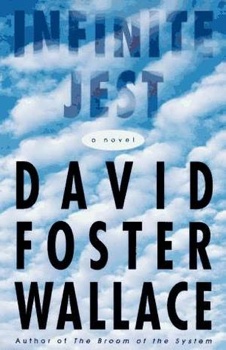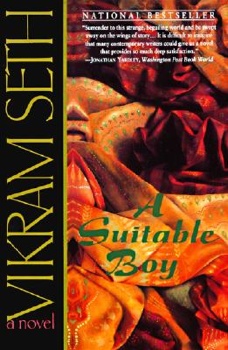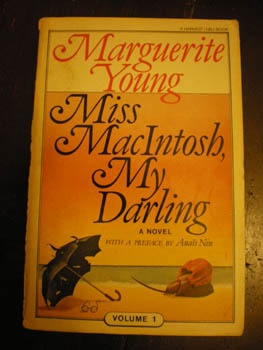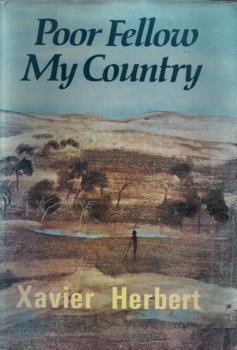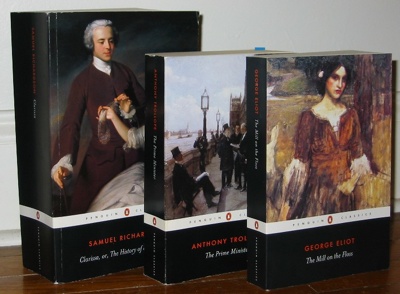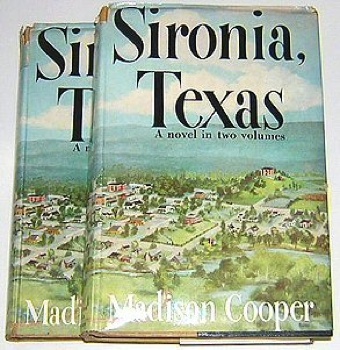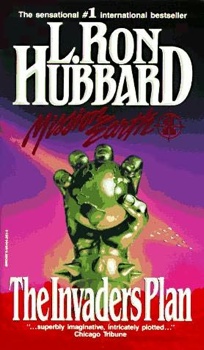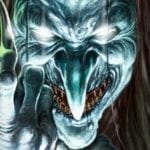David Foster Wallace may have been the most critically acclaimed novelist of the modern era. His novels, The Broom of the System and Infinite Jest, were both highly acclaimed by literary critics. Infinite Jest was even named one of the best 100 novels from 1923 through present day by Time Magazine. Wallace committed suicide in 2008, at the age of 46, leaving an incomplete novel behind. However, the publishing company responsible for his first two novels announced that it will release the unfinished manuscript sometime in 2010. Summary: Set in an absurd, yet uncanny, near-future, with a cast of hundreds and close to 400 footnotes, Wallace’s story weaves between two surprisingly similar locales: Ennet House, a halfway-house in the Boston Suburbs, and the adjacent Enfield Tennis Academy. It is the ‘Year of the Depend Adult Undergarment’ (each calendar year is now subsidized by retail advertising); the U.S. and Canada have been subsumed by the Organization of North American Nations, unleashing a torrent of anti-O.N.A.N.ist terrorism by Quebecois separatists; drug problems are widespread; the Northeastern continent is a giant toxic waste dump; and CD-like “entertainment cartridges” are the prevalent leisure activity. The novel hinges on the dysfunctional family of E.T.A.’s founder, optical-scientist-turned-cult-filmmaker Dr. James Incandenza (aka Himself), who took his life shortly after producing a mysterious film called Infinite Jest, which is supposedly so addictively entertaining as to bring about a total neural meltdown in its viewer. As Himself’s estranged sons, professional football punter Orin, introverted tennis star Hal and deformed naif Mario, come to terms with his suicide and legacy, they, and the residents of Ennet House, become enmeshed in the machinations of the wheelchair-bound leader of a Quebecois separatist faction, who hopes to disseminate cartridges of Infinite Jest and thus shred the social fabric of O.N.A.N.
In addition to being a successful novelist, James Clavell was also an immensely talented screenwriter – he was the mind behind The Great Escape and To Sir, With Love. He only began to pen novels during a writer’s strike in Hollywood, when his wife recommended that he spend his time recording his experiences as a prisoner of war in Japan during World War II. Clavell’s written memories became his first novel, King Rat. He continued to write about Japan, and other areas of Asia, in his subsequent novels, including Gai-Jin. Summary: [Gai-Jin] takes place in 1862 Japan. The gai-jin (foreigners) have arrived, intent on doing business with the Japanese. With laws against the use of the wheel in carriages or carts, the Japanese, their tradition-bound Emperor and competing warlords detest the foreigners, who have ruined the Chinese with the Opium Wars. The mighty Struan shipping empire, Noble House, has built a base in Yokohama, but with the illness (fatal) of Culum Struan, tai-pan (head) of the business empire, 20-year-old Malcolm Struan stands ready to become tai-pan. In the first chapter, however, he’s attacked by samurai assassins on the Tokaido road and lies either bedridden or hobbles about for the rest of the novel. Young Angelique Richaud, 18, Parisienne daughter of a gambler who has lost what money the family had, sets her eye on Malcolm. Angelique is raped by a rogue samurai and now secretly carries his child, unbeknownst to the love-besotted Malcolm. Angelique’s syphilis-stricken fellow Frenchman, Andre Poncin, wends his way through the plot toward a glorious love-death with his Japanese mistress, while Japanese warlords fight each other, samurai endlessly behead samurai, earthquakes shiver and Yokohama burns.
Carl Sandburg won two Pulitzer Prizes during his lifetime, one for a biography of Abraham Lincoln, and the other for a book of poetry. Remembrance Rock was Sandburg’s only novel, and it clearly meant a lot to him, personally. Upon his death in 1967, Sandburg’s ashes were placed beneath a red granite boulder named Remembrance Rock. Summary: …Remembrance Rock follows the growth of the American dream through more than three centuries of our nation’s history. The narrative stretches from the founding of Plymouth Colony, through the Revolution and Civil War to World War II, and includes a cast of characters as vast as the landscape itself. Puritans and heretics, revolutionaries and Tory loyalists, abolitionists and slaveholders and even a Supreme Court Justice. Thematic unity to this sprawling epic surfaces in the symbolic reappearance of a bronze plaque that bears an inscription of Roger Bacon’s ‘Four Stumbling Blocks to Truth,’ each of which is relevant to a particular period of our past.
In Atlas Shrugged, Ayn Rand presented her philosophy of Objectivism, which maintains that reason is the only way for man to gain knowledge. Rand was a champion of laissez-faire capitalism, likely in part due to her negative experience with communism in her homeland of Russia. Summary: In Ayn Rand’s Atlas Shrugged, heroine Dagny Taggart fights to save her transcontinental railroad from collapse. Dagny’s efforts prompt her to seek out the man who stopped the motor of the world, and to hunt down the destroyer who’s leading a strike of the great minds. She finds both in the person of John Galt, who asserts that the first right of human beings is the freedom to think and act independently.
Vikram Seth was born in India and was educated in the United States, The United Kingdom and China. His international life is reflected in his literary works, which are set in the United States, England and India. He has also written a travel guide to China. Summary: Set in the post-colonial India of the 1950s, this sprawling saga involves four families: the Mehras, the Kapoors, the Chatterjis and the Khans, whose domestic crises illuminate the historical and social events of the era. The multi-charactered plot pits mothers against daughters, fathers against sons, Hindus against Muslims and small farmers against greedy landowners facing government-ordered dispossession. The story revolves around independent-minded Lata Mehra: Will she defy the stern order of her widowed, upper-caste Hindu mother by marrying the Muslim youth she loves? The search for Lata’s husband expands into a richly detailed and exotically vivid narrative that crisscrosses the fabric of India.
While Miss MacIntosh, My Darling met with some acclaim, Marguerite Young’s earlier work, Angel in the Forest: A Fairy Tale of Two Utopias, won multiple literary awards. It was a study of the foundation of New Harmony, Indiana, a utopian commune where Young lived for seven years. Summary: … [A] young woman embarks on a dreamlike voyage through time and memory in search of her darling childhood nursemaid, Miss Macintosh from What Cheer, Iowa, who has disappeared into the ocean, never to be seen again. Finding herself adrift on a sea of delusion and fantasy, the young woman fervently searches for reality only to discover herself drowning in illusion.
This novel is also, unfortunately, out of print, although used copies seem to be available on amazon.com and eBay. Poor Fellow My Country is the only Australian novel to appear on this list. While Xavier Herbert was a controversial figure, both by todays and his own time’s standards, he was known for being a champion for the Australian Aboriginal people; this commitment appears in Poor Fellow My Country. Summary: Ranging over a period of some six years, the story is set during the late 1930s and early 1940s; but it is not so much a tale of this period as Herbert’s analysis (and indictment) of the steps by which we came to the Australia of today. Capturing the Spirit Of The Land, Herbert has paralleled an intimate personal narrative with a tale of approaching war. Prindy, the young quarter-caste Aborigine identifies with Bob Wirridirridi the witch-doctor and the Rainbow Snake Cult. He grows from adolescence to manhood through a series of events, some of which are hilariously comic and others tragically violent, but he does not lose sight of his final goal: that of initiation into full manhood in the Cult of the Rainbow Snake. His natural grandfather Jeremy Delacy, The Scrub Bull, infuriates people with his attitudes, especially that of his apparent lack of interest in influencing Prindy. At times he is harsh and brutal, but he is also shown to love with rare compassion. Rifkah, the Jewish refugee from Nazi Germany, who eventually identifies with the Aborigines and becomes Prindy’s tribal mother, is brought into conflict with Aelfreda Candlemas the reformer and writer who tries to make a superman of Jeremy and in her failure turns from scorching love to violent rejection.
The word count of 969,000 words is true for the first edition of Clarissa, but later editions seem to have climbed to above 1,000,000 words. However, it was not possible to find an estimate more accurate than “above 1,000,000 words” for these later editions. However, even when using the lower number of the first edition, Clarissa still easily comes in third on this list. Though Clarissa is well-known for its length, it is also noted for being an example of an epistolary narrative. Summary: Richardson first presents the heroine, Clarissa Harlowe, when she is discovering the barely masked motives of her family, who want to force her into a loveless marriage to improve its fortunes. When Lovelace, a romantic who holds the code of the Harlowes in contempt, offers her protection, she runs off with him. She is physically attracted by, if not actually in love with, Lovelace, but she is to discover that he wants her only on his own terms and she refuses to marry him. In Lovelace’s letters to his friend Belford, Richardson shows that what is driving [Lovelace] to conquest and finally to rape is really revenge for her family’s insults and his sense of Clarissa’s moral superiority. For Clarissa, however, accepting marriage as a convenience is no better than accepting the opportunistic moral code of her family. As the novel comes to its long-drawn-out close, she is removed from the world of both the Harlowes and the Lovelaces, and she dies true to herself to the end.
Unfortunately, this novel is out of print and rather difficult to come by. The novel’s setting, the town of Sironia, is based on the author’s hometown of Waco, Texas. The extent to which the book is autobiographical is not known, as Cooper had all of his files destroyed, though a few of the characters from his work have been identified with their likely counterparts in real life. Summary: Sironia, Texas describes life in the titular town during the first twenty years of the 20th century. “…to judge from Sironia, Texas in those days must have been … wilder than even now. In the lives of Cooper’s 30-odd major characters, there occur a flood, several murders and suicides, and a castration party. One whorehouse burns down, one Negro is burned alive, one changeling is introduced into a childbed. Girls are seduced and others are beaten; at times it seems as though the streets of Sironia must be paved with female teeth. Crowbars are swung in labor strife, horsewhips in political campaigns. Sex-crazed old women corner fresh-faced youths in locked bedrooms. Blackmail is commonplace, miscegenation comes almost as natural as breathing, and the highest ambition of mankind, it would seem, is to own a real, live, spangly N’awlins ‘hoah’.
Some people might argue that Mission Earth is, in fact, a series of novels, and should be excluded from this list, but it appears that it was the author’s intent for the work to be a single novel, published in ten volumes. Despite being authored by L. Ron Hubbard, this novel in fact has little to do with Scientologist beliefs, though, like the Scientologist mythology, Mission Earth’s plot is based on an alien race coming to Earth and the chaos that ensues. Summary: Mission Earth has an entire galaxy for its backdrop, though the main action occurs on Earth and the planet Voltar. The Voltarian Grand Council has become convinced that it must send a mission to prevent Earth from destroying itself–thus allowing the Voltar Confederacy to proceed on its long-standing invasion plan and timetable to conquer a planet they regard as an important future way-stop on the main invasion route toward the center of the galaxy. The mission is assigned to a clandestine agent, Fleet Combat Engineer Jettero Heller. Soon after arriving on Earth, he heads to New York City where he is determined to get to the bottom of what is causing Earth to self-destruct, unaware that his every move is being tracked and that powerful forces on Voltar want his mission to fail.
